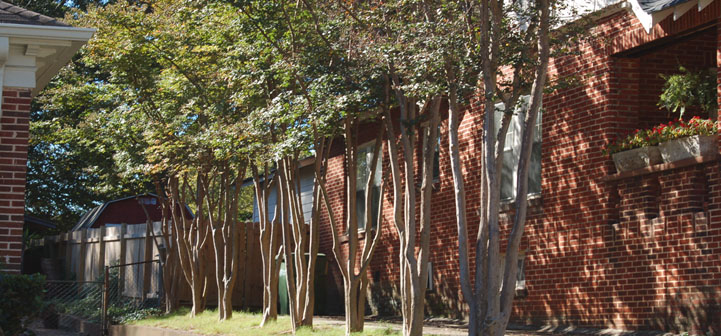Strategically positioning vegetation in landscapes can maximize energy benefits and save money for homeowners, commercial properties and public facilities. Vegetation can be placed within the landscape to manipulate air movement by
- obstruction,
- guidance,
- deflection, and
- filtration.
Use vegetation to obstruct or block undesirable winds by arranging dense plantings at a 90º angle to the prevailing winds. Vegetation barriers can be single or multiple rows of trees and shrubs. The air speed is affected by the density of vegetation, the distance the vegetation is from the home or business being protected, and the height of the vegetation.
Wind can be guided during the summer months by designing walls of vegetation to direct air to sites where maximum cooling is desired (figure 1). By directing wind through strategically placed vegetation to constrict airflow, designers create a vortex effect. Wall(s) of vegetation can be used also to deflect wind away from targeted areas. Implementing the same concept of using vegetation as a barrier, the air is guided away from the targeted area rather than blocking it entirely. Additionally, windbreaks can be designed to slow the speed of the wind by filtration when some, but not all is desired.

Figure 1. How to create an effective windbreak. Image Credit: Landscape for life, http://landscapeforlife.org/plants/use-vegetation-to-increase-energy-efficiency/ (used with permission).
The key to using vegetation for energy savings will depend on:
- Appropriate site analysis
- Effective design of the area
- Selection of the right tree for the right place
See additional resources about windbreaks, tree placement and Urban Tree Benefits.
